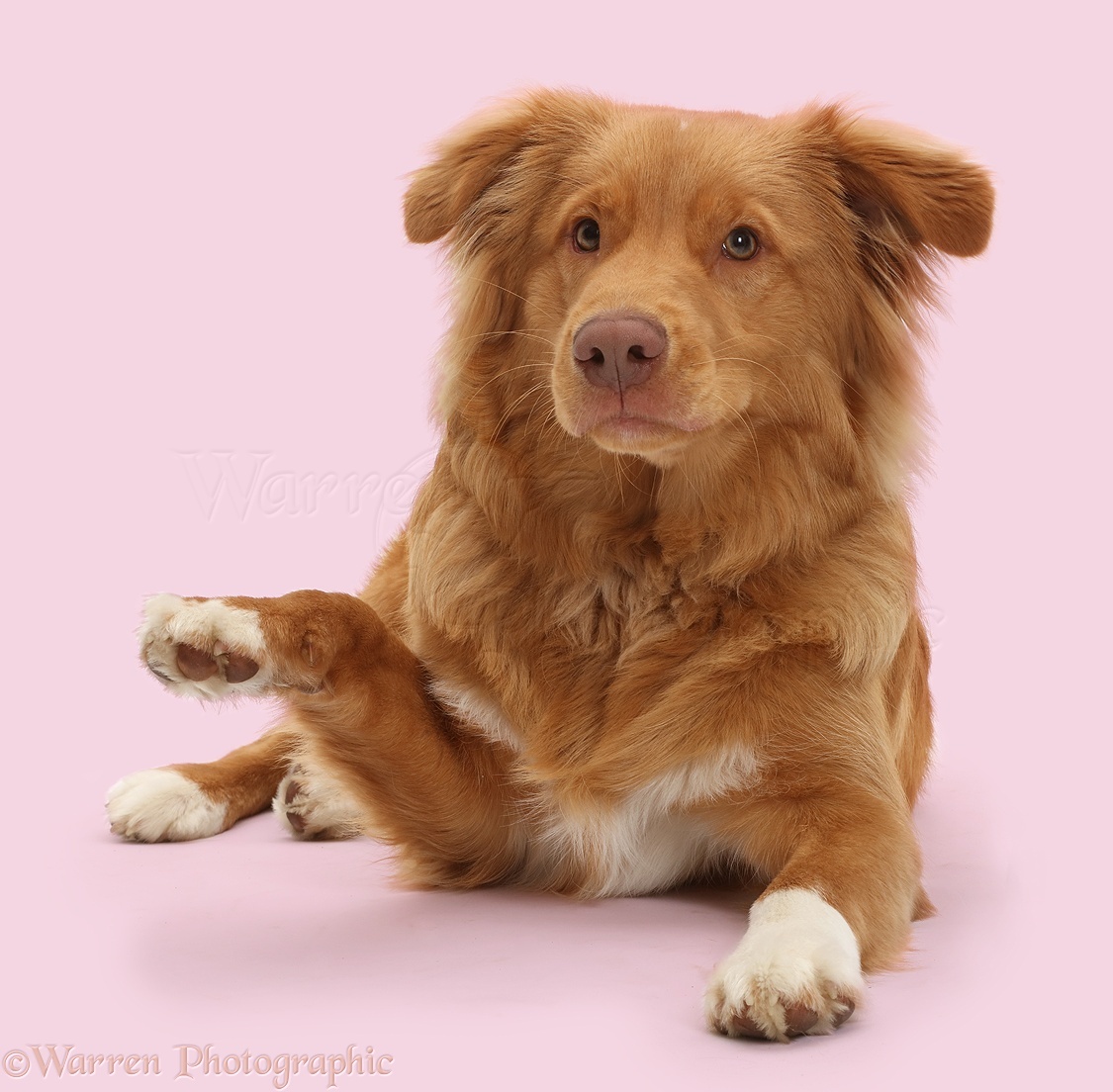

The ears are triangular and set high and well back from the skull. Those who breed Tollers for conformation shows consider the head (clean cut, slightly wedge-shaped) to be an important feature and believe it should resemble that of a fox and must never be blocky like that of a Golden Retriever. The hair on the muzzle is short and fine. Featherings are soft and moderate in length, the tail is well feathered and held jauntily when the dog is excited or moving. Some winter coats may form a long loose curl at the throat. The coat may have a slight wave on the back but is otherwise straight. The Toller was bred to retrieve from icy waters and must have a water-repellent double coat of medium length and softness and a soft dense undercoat. Dogs with white on the shoulders, around ears, back of neck, across back or flanks, or with silvery, grey or black areas in coat are disqualified from conformation shows. Lack of white is not a fault Tollers can be born without white markings. It is common for a Toller to have at least one of the following white markings: tip of tail, feet (not extending above the pasterns) and chest. The Toller should not be buff, brown, or beige, though some buff and sable Tollers do appear in breeding lines. The lighter shades of golden red are deeply pigmented and rich in colour. Tollers can be any shade of red ranging from a golden red through dark coppery red with lighter featherings on the underside of the tail, pantaloons, and body. The legs are sturdy and solid and they have webbed feet. They should be of moderate build - a lack of substance or a heavy build are penalized by judges because both detract from the breed standard and athleticism. Conformation judges require Tollers to be capable of tolling and physical faults that inhibit working ability are heavily penalized. According to the breed standards, the Toller is athletic, muscular, compact, medium to heavy boned, balanced and powerful. Tollers are often mistaken for small Golden Retrievers, but the Toller is more active, both physically and mentally. Toller’s head showing the rich orange coat colour and "foxy" head shape that are desirable for the breed They are particularly suited for retrieving in cold water climates because of their water-repellent double coat. The Toller then retrieves any downed birds. When the birds are close, the hunter calls the dog back to the blind, then rises, putting the birds to flight and allowing themselves a shot. Its unusual activity and white markings pique the curiosity of ducks and geese, which swim over to investigate. The dog's appearance is similar to that of a fox.

The hunter stays hidden in a blind and sends the dog out to romp and play near the water, usually by tossing a ball or stick to be retrieved. Tollers are named for their ability to entice or lure waterfowl within gunshot range, called "tolling". The breed gained national recognition in 1980, and was declared the provincial dog of Nova Scotia in 1995, when two Nova Scotia Duck Tolling Retrievers were awarded Best in Show at championship events that included many breeds. The breed was perfected in the second half of the 19th century. The toller is a mixture of retrievers, spaniels, setters, and possibly a farm collie mongrel, although this has yet to be confirmed. The toller was originally referred to as the Little River Duck Dog before being officially recognized by the Canadian Kennel Club in 1945 as a purebred dog. The breed was developed in the Acadian community of Little River Harbour in Yarmouth County, Nova Scotia, around the beginning of the 19th century. The American Kennel Club ranks the toller as the 87th most popular dog breed. The breed originated in Yarmouth County, Nova Scotia, Canada. The name "toller" is derived from their ability to lure waterfowl within gunshot range. Tollers are intelligent, eager to please, alert, and energetic. It is the smallest of the retrievers, and is often mistaken for a small Golden Retriever. The Nova Scotia Duck Tolling Retriever is a medium-sized gundog bred primarily for hunting. Varying shades of red or orange, with white on the chest, feet, and on top of the nose Medium-length coat with a softer, dense undercoat Yarmouth Toller, Tolling Retriever, Little Red Duck Dog, Little River Duck Dog Dog breed Nova Scotia Duck Tolling Retriever


 0 kommentar(er)
0 kommentar(er)
